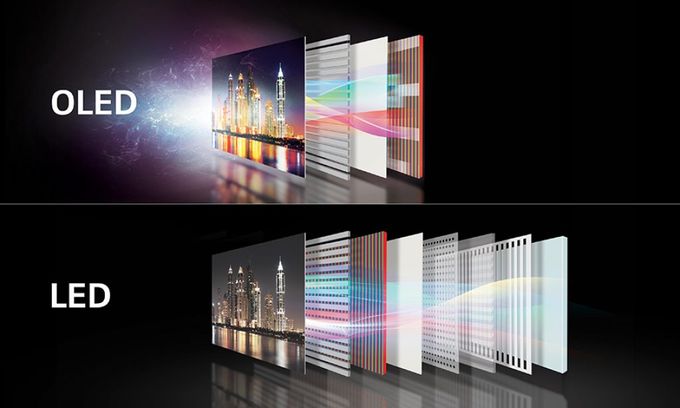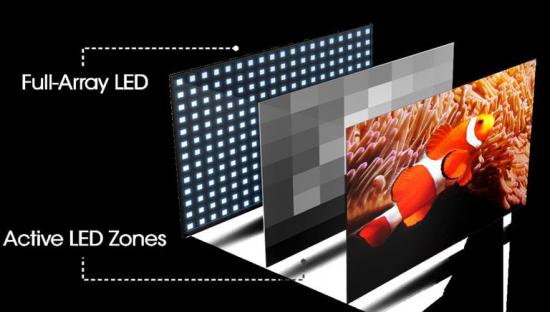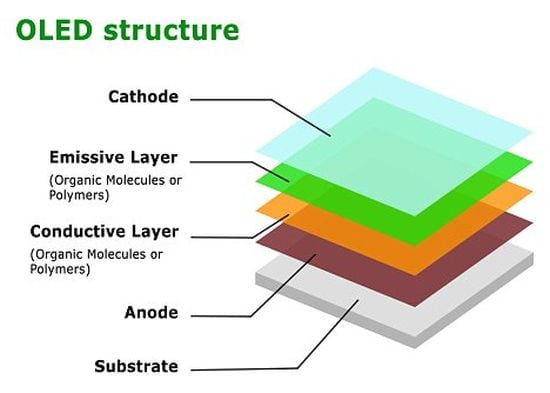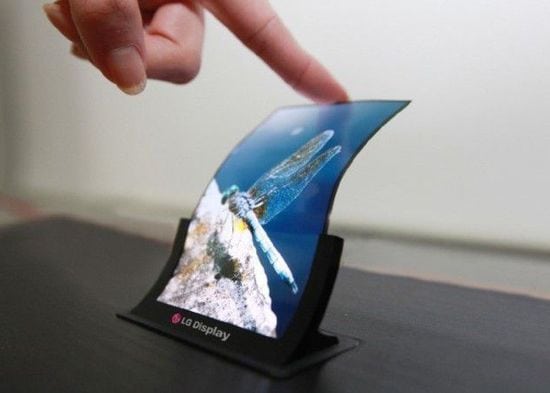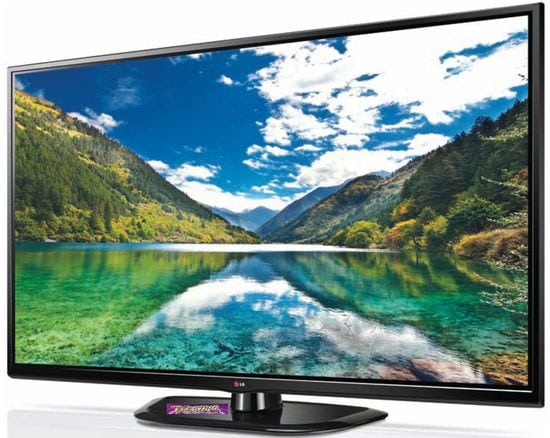Today, TV set is one of the most technically complex devices. The competition between the main leaders of this segment is accompanied by their constant improvement. A wide range of offered models with a lot of technical characteristics sometimes makes it difficult to choose the optimal TV.
The matrix is one of the main elements of the TV and significantly affects the cost of the model and its capabilities. Their qualifications can simplify the choice of the most suitable TV.
Modern TVs form images using LCD or OLED technologies. Plasma technology, unfortunately, did not stand the competition. Of course, the market still offers these TVs, but the development of new models by companies has already terminated.
LCD models
Some consumers sometimes do not quite understand the difference between LCD and LED TVs because of the incorrect terminology of some companies. In fact, the LED screen is an LCD screen with an improved LED backlight that replaced the less efficient fluorescent backlighting.
LCD is the most common type. The image in such TVs is formed with the help of polarized light, the several filters and controllable liquid crystals.
Forming an image on the LCD-TV screen is carried out by passing of polarized light through the liquid crystals. Light flow is created with the help of the backlight.
The backlight types are divided into CCFL (cold cathode) and LED (light emitting diodes).
CCFL backlight
CCFL technology (cold cathode) is based on the use of fluorescent lamps behind the matrix.
PROS:
– uniform illumination.
CONS:
– large thickness.
– high power consumption.
– localized control of backlight is impossible.
LED backlight
Today LED technology almost fully has superseded the CCFL backlight.
PROS:
– low price;
– static method of image forming (absence of dithering) is well suited for displaying images and photographs, and is safely for the device;
– high brightness;
– small thickness;
– low power consumption.
– local backlight control;
– long service life (10-15 years);
– relatively low price of models with large diagonal.
CONS:
– high levels of black.
It’s equal from 0.02 nit in UV²A matrix with Direct -LED backlight, and up to 0.2 nit in IPS.
– unsatisfactory image depth;
– dynamic resolution is only 300 – 700 lines.
By the way, the NVidia graphics card with monitor on IPS matrix may not work optimally. It’s advisable you to check the preset mode in the video card settings. Manufacturer often establishes the limited mode default.
Types of LED backlight
LED backlight is divided into the Direct-LED and Edge-LED backlighting. But modern expensive models often use a more advanced Full array.
Today it provides maximum image quality playback.
*VA matrix
This type is a compromise between “TN + film” and IPS matrices. MVA matrix (Multi-domain Vertical Alignment) is the most popular. This technology is developed by Fujitsu Company.
PROS:
– large viewing angles;
– good color rendering;
It’s the better compared to “TN + film” matrix, but worse than for IPS matrix.
– low input lag;
– deep black;
– low price.
CONS:
– The reduction of image details in shadows compared to IPS.
IPS (SFT), PLS, S-PVA, UV²A matrices
IPS (in-plane switching) or SFT (super fine TFT) technologies have been developed by companies Hitachi and NEC in 1996. Accordingly, NEC uses the SFT abbreviation, and Hitachi – IPS.
This matrix is ideal for TV’s of average price segment and today mainly is produced by LG Company.
The analogs of matrices with this technology from other manufacturers are called PVA (Patterned Vertical Alignment) from Samsung Company, Super PVA from Sony-Samsung (S-LCD) and Super MVA from CMO Company. However, this is an incomplete list. Manufacturers are constantly developing new versions with improved characteristics.
IPS (SFT)
PROS:
– good color rendering;
– good contrast ratio;
– wide viewing angles.
CONS:
– too high black level (~ 0.16 nit, 1nit = 1 cd / square meter).
– too large input lag.
These matrices are installed on almost all LG TVs 3-9 series, Philips 4, 6 series, Panasonic and many others. The presence of an IPS matrix is checked very simply on the screen without protection. IPS does not save the plume on the screen in case of a touch of a finger.
PLS
PLS matrix is designed by Samsung Company as an alternative to more expensive IPS matrices.
PROS:
– high brightness.
– good color rendering.
– wide viewing angles.
– low price;
– low energy consumption.
CONS:
– large input lag;
– low contrast;
– uneven backlight.
S-PVA
S-PVA matrices are also produced by Samsung Company. They are designed for TVs of a higher level compared to IPS.
PROS:
– deeper black levels (from 0.05 to 0.1 nit depending on the backlight);
CONS:
– viewing angle is less.
– color rendering is worse compared to IPS matrix.
This matrix is used in Samsung models of 7-8 series, Sony TVs 7-8 series, Philips TVs 7-8 series and in others models.
UV²A
UV²A matrices are produced by Sharp Company. Today, many experts believe that this the most perfect matrices. They have a wider viewing angle compared to S-PVA, but smaller compared to IPS-matrix.
PROS:
– deepest black level (0.02 – 0.06 nit).
CONS:
– Sharp Company produces an insufficient quantity of these matrices.
This matrix is used in the 9 series of Philips and in the top series of Sharp.
Matrix OLED (Organic Light Emitting Diode)
Today it’s the most advanced technology of image forming in TVs. It’s based on organic light-emitting diodes. The image is formed with the help of self-illuminating diodes that glow under influence of an electric current. Each cell is a separate light source. Therefore, the need in the backlight is absent. The operating principle of this technology is shown in the diagram.
LG and Samsung Companies are the leaders of developments in this area. The price of these devices is significantly superior the cost of similar LCD and plasma TVs. But, LG Company promises a significant price reduction.
PROS and CONC
PROS:
– very small thickness.
Display thickness is only a few millimeters.
– very low input lag;
– almost unlimited contrast.
For example, Sony XEL-1 provided a contrast ratio of 1,000,000: 1.
– very low power consumption.
This factor is often critical for portable devices.
– very wide viewing angles;
– wide prospects of using flexible OLED display.
CONS:
– different speed of pixels degradation.
At present, this problem is solved with the help of compensation by software methods.
– relatively short service life.
The service life of modern models is about 10 000 hours. For comparison, this value for LCD TVs is equal to 60.000 hours and 100.000 hours for plasma TVs.
– very high price.
Today manufacturing cost of OLED-displays is very high.
Additionally, there is another aspect. Several models of Samsung Company initially were perceived as OLED-TVs. Subsequently emerged that these are very thin LCD TVs with LED backlight.
Plasma TVs.
These TVs are still available, so their key features may be of interest to their fans. The image is formed with the help of luminescence phosphor under action of UV rays. TV does not requires a backlight because an each cell is an independent light source. Thickness of the first plasma TVs was too large due the size of cell. But thickness of the modern models do not exceed 1,5 in.
The diagonal size begins with 42″.
Plasma matrices have different marketing names.
Plasma TV features
This technology has several important advantages, including:
– perfect black color;
Black level in the Panasonic models of 2012 is only 0.008 nit.
– high dynamic resolution;
Dynamic resolution is 1080 lines.
– very high image depth;
Playback of high-quality content is significantly different compared to LCD TVs. Image has the greater depth, saturation of colors and strongly marked effect of volume.
– High screen refresh frequency due to very small input lag;
– high contrast.
Unfortunately, this technology has a lot of disadvantages due to fuatures of its design and technology.
Design
This list includes:
– some models have insufficient brightness;
– low quality playback of photos.
This is caused by the formation of gradations due to dithering.
– high price;
– thickness of the plasma TV is 1.5-2 times greater compared to LED TVs;
– high energy consumption.
Electricity consumption is approximately 2 times higher than for LED TVs.
– high weight due to the large amount of glass in the device.
Technology features
– the brightness of the phosphor decreases with time;
– there is possibility of burnout luminophore under prolonged display of static image.
Implications are manifested when the TV is turned off or on a dark background. “Burning out” of cell can occur if the screen during several days displays motionless contrast image. However, modern models have a protection system. The backlight turns off automatically if the user forgets to turn off the TV.
– pixels are distinguishable on the display from close range;
– work of plasma TV can become unstable at an altitude of 2000 and more meters above sea level.
It’s due to the differential pressure in the cells and the outside. Furthermore, in these conditions, the TV starts to generate extraneous sounds.
– ionization of the gas at the plasma creation can generate high-frequency noise;
– presence of residual image.
This happens after several hours of displaying the static element on a black background. The display may appear silhouette that disappears after a few tens minutes. Therefore, the plasma TV is not recommended for use as a monitor.
Conclusion
Only model with a high-quality anti-reflective coating provides visualization of their advantages. Otherwise, the advantage of plasma TV will be manifested only in the dark.
This video illustrates the differences and features of OLED and QLED technologies.
